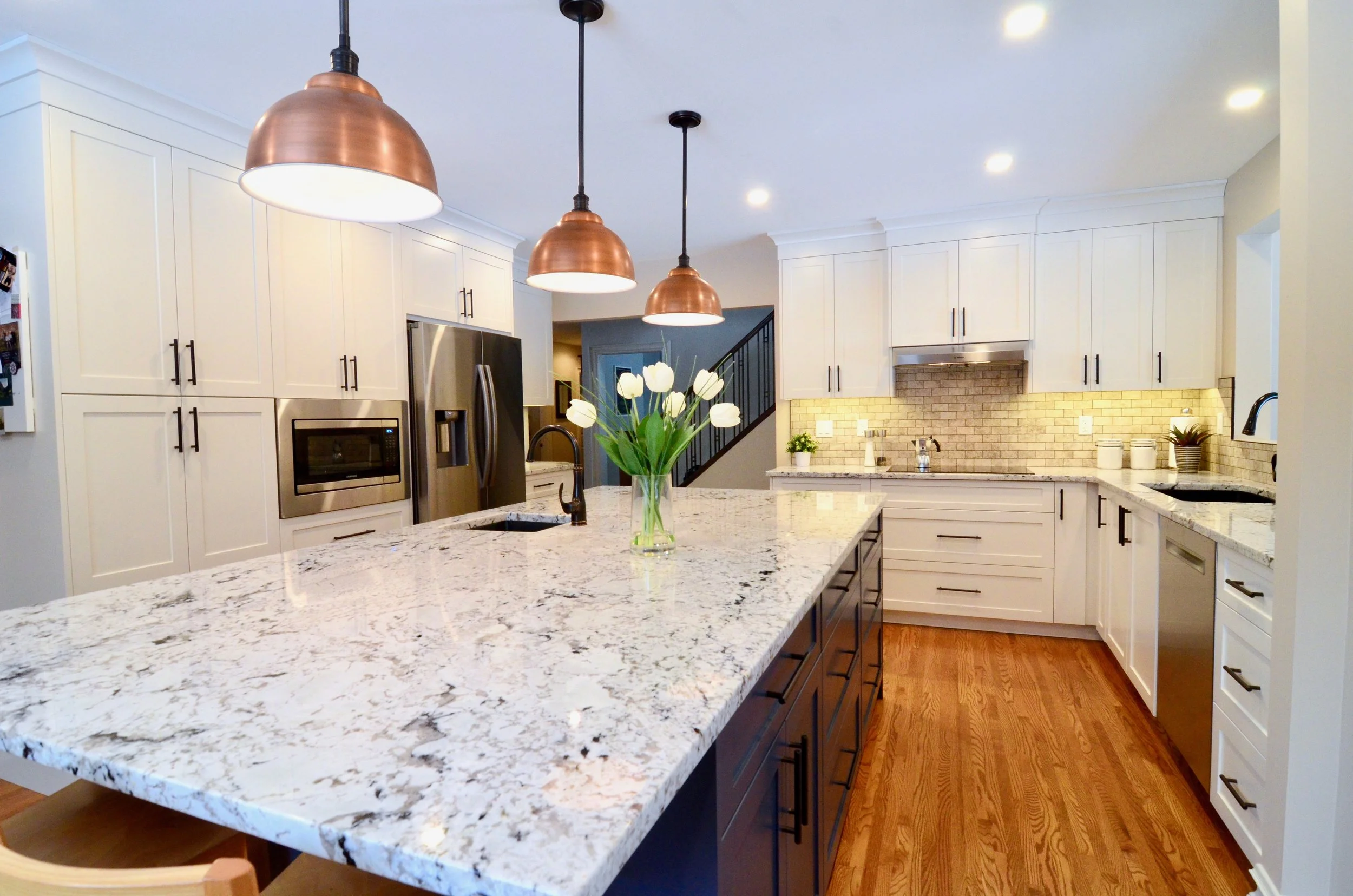The Design-Build Advantage
We’re often asked about the advantages of design-build over the conventional system of architect/designer and general contractor. It’s a great question and with 2 decades of design-build experience under our belts, we feel like it’s a good time to call out our top ten reasons why the design-build system is absolutely the best way to get what you want in your renovation at a price you are prepared to invest.
1. Everybody is on the same team:
We’re all in this together and we all have the same goal: to arrive at a successful project that meets or exceeds the client’s expectations for their project. When challenges are encountered on a project (and there are always challenges), pointing fingers is not an option, everyone rolls up their sleeves and works on solutions.
2. Total accountability:
One entity is accountable for everything – including how the end result looks, how much it costs and the timeline of completion. When the same group that designs the project also builds the project, there tends to be much more attention given to pricing and scheduling in the design phase. The cost of everything is taken into account early on in the process; all fees, construction costs, utilities, landscaping allowances – everything.
Unfortunately, it’s not unusual for us to hear from people that “their renovation cost twice as much as the architect said it would”. Such a scenario is entirely unacceptable in the design-build world. Design-build focuses on results, not excuses.
3. Continuity:
A design-build firm is involved from start to finish, which adds an inherent efficiency. The chance for things to fall through the cracks is greatly diminished.
4. Expertise:
Design-build firms are experts in both fields. Commonly firms will have EITHER architectural or design training and experience, OR will have field experience in construction and the necessary trade contacts. To be a true design-build firm they must have professional training and experience in both design AND construction, have strong, long-term relationhips with a full team of talented trades and suppliers, and intimate, first-hand knowledge of pricing and the appropriate sequencing of how contruction projects flow.
In the new economy we’re noticing architects trying a bit too hard to look like design-build operations with very little field training and experience. Likewise, we’ve raised our eyebrows at a few general contractors who try to be “designers” (often with somewhat “questionable” results).
5. Professional guides:
We’ve all heard the stories where the hand-off between design and construction can get out of hand and messy. Design and construction shouldn’t be chaotic or stressful. A design-build firm is a beacon to clients throughout the process, guiding the way to the best possible outcome. Design-build refines a system from beginning to end and manages the chaos into orderly steps.
6. Involvement:
Design-build operates under the assumption that the client actually wants to be an active participant in the design and construction of their home. By taking an involvement they’re guaranteeing that they get the outcome and satisfaction of their goals – what they want is going to be achieved. We’ve found that such an involvement is inspiring and gives people a lasting sense of pride about their home.
7. Collaboration:
Design-build cuts out the big egos so common in the design industry. In design-build the client retains total control over the project and the team is there to empower them.
8. The best kind of communication is open, honest and often:
Design-build is transparent because we want clients to understand the process and to know what’s going on. The best partnerships work, not because people say what everyone wants to hear, but because they say what everyone needs to hear. Through clear communication the budget is defined early on and it becomes the agreement for the entire project.
9. Time is of the essence:
Design and construction involves managing hundreds of timelines that need to coordinate in lockstep. Design-build creates opportunities for clients to sit with big decisions, ask questions, and consider their options. Anything the team can do to avoid taking steps backwards is going to lead to better, faster and more cost-effective results. The design-build system is highly adaptive and responsive in the field. Big decisions can be revisited during construction without change orders or additional fees. The conventional story is that if you make changes it will cost you money – not necessarily so in design-build.
10. Cost savings:
Picking up further on items 1 thru 4 above, because there is accountability for the project costs and the design guidance provided to the client (typically based on an advanced budget target), the design-build model provides inherent savings. Based on models and stats we’ve viewed, savings are typically estimated at approximately 10% of the overall project costs. That can literally pay for that new bathroom, theatre room or wet bar!

